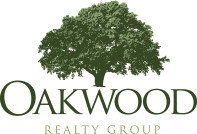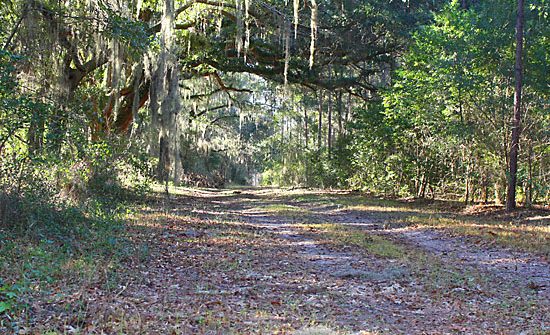Author: Hunter Brant, President of Oakwood Realty Group
Date: June 9th, 2018
When considering land for sale in North Florida and South Georgia, many factors are involved in the revenue generating potential and the resulting value of the land. Experience is key when valuing different land investment opportunities. Even if recreation and the outdoors is your primary motivating factor, making the best investment is always a big part of the decision. Most of our clients want to maximize both the recreational potential and the return on their investment. It takes years of experience to maximize revenue generating potential and enjoyment of the land. Here are a few things we consider when valuing a property either for sale as a listing or for one of our clients who is buying.
Let’s take a look at a typical scenario we would encounter with South Georgia or North Florida farms for sale which have differing amounts of wetlands, agricultural land and timberland. How do you evaluate which one is the best investment or which one should have the highest value?
Lets start with basics. Timberland and agricultural farms are two of the most common investments here in North Florida and South Georgia and the golden rule of location, location location matters a lot. It matters for several reasons, one is resale, where the property has significantly better upside for resale when its in an A location, second is site quality and the better the site quality the better the growth of your trees, animals and crops and the higher the return will be during ownership. Site quality is determined by many factors such as soils, drainage, topography, wildlife populations and many others. For timber, soils are probably the most critical factor. The measure of a site’s quality for timber growing purposes is measured in site index, which is the average height of a tree at 25 years old on a given site. Landowners want to get the best return they can just like any other investor and well-located tracts often provide a substantial boost to the return at the end when the property is being sold. If the dirt has appreciated along with the revenues received from timber harvests and leases during ownership the return will be significantly higher. Many investors try and pick the cheapest of all options to make their returns the best, but paying a little more for a tract in a good location, assuming the returns still work, can often pay off at resale especially if the sale is timed well to coordinate with a peak time in the real estate cycle. Conversely, the best real estate sites don’t always have the best soils and this is a major determining factor in return during ownership. Bottom line is site location is very important and an experienced advisor is a great asset when evaluating location.
Next consideration is upland / wetland ratio. Again the cheapest opportunity may not be the best. The calculation needs to be made to figure out the cost per usable acre in order to truly make an accurate comparison, particularly for the timberland analysis. In other words just because one opportunity is less per acre you wont know whether its truly the best until you know your cost per usable acre. The timber on the property is normally bought / sold at its appraised value so you would first remove its value and then make the calculation on the dirt to see which opportunity really is the best.
For the timberland portion, the age class distribution of the timber stands can be a big determining factor for return. The biggest upside is provided by the graduation in classes of timber. For example trees typically grow at about 6% per year depending on seedling type and site, and there will be a time when the majority of a stand graduates from pulpwood to chip-n-saw product type and this will provide you a 47% jump in value per ton in just one year at current prices. Assuming you could buy timber at pulpwood today and sell it as chip-n-saw in a few years the return would be much higher than just the typical 6% growth rate for that stand. In general, a diversified age class distribution will provide the best growth rates and the most sustainable returns over time for timber.
Now let’s consider additional revenue sources other than timber sales, these can often be the difference between an average return and outperforming the norm. Straw production is one of the most common and typically can be undertaken between ages 8 and the first thinning, whenever that occurs. This is a nice supplemental income before the first thinning occurs and typically the straw buyer will perform all or most of the prep work necessary in a timber stand to prepare for harvest. This occurs as early as the second year and if your goal is to harvest straw you should discuss this with the buyer before the stand is even planted ideally. Hunting leases, if you don’t plan to use the property for hunting yourself, can typically bring in another $10-$20 per acre depending on the location and amenities provided. Other income sources include honeybee leases and agricultural leases. Assuming the majority of the land is in timber, the best practice is probably to lease out the agricultural portion which provides a reliable cash flow in years when no timber harvests occur and is not subject to the ups and downs of the commodities markets. This is also a key contributor to quality wildlife habitat. To the extent these fields can be interspersed within the timber stands they will have a greater opportunity to create better wildlife habitat and better resale value in the land itself when compared to one big open field. Combining these sources of revenue with timber sales yields a better return, improves wildlife habitat and resale value.
If wildlife is one of your primary objectives, the variety of timber age classes and land uses and the management practices that go with each one provide a patchwork of habitat that benefits all kinds of wildlife. No one type of habitat provides all of the wildlife populations needs, so a variety of uses and habitat types is best, critical really. We have published several different articles on incorporating wildlife management into timber and agricultural management practices and we would recommend anyone looking to maximize wildlife on their investment lands read those articles and consult with an expert.
One last opportunity that deserves significant thought is conservation easements. These easements have become much more popular in the last few years and could warrant their own discussion entirely. Briefly, there are two types of easements a landowner could consider, purchase easements and donation easements. In either case the easement is perpetual on the land and restricts different activities with the primary objective of maintaining the land in its current natural state and protecting it from development or degrading activities. Easements are typically most valuable when they adjoin other conserved lands, either other private easements or state or federally owned lands. A purchase easement would be purchased from the landowner by a conservation agency and is simply a rebate toward the purchase price paid for the land, paid in cash. These could easily take up to 3 years or more to achieve. A donation easement is very valuable but comes in the form of tax-deductible credit and a landowner would need federal taxable income to derive value from this type of easement. The donation easement is a great way to protect taxable income and can be valued just like depreciation is valued in a business investment. Regardless, most all agricultural and recreational uses are maintained by the landowner in either scenario and there is significant upside for the landowner. The resale of these easement-encumbered lands has also become more common and readily valuable giving them more credibility with landowners. Here, more than anywhere, an expert consultant as well as tax adviser is key. Oakwood Realty Group has performed several of these type transactions for our clients over the last several years and can provide guidance on what is best for the landowner based on their desired result.
After evaluating each investment and weeding out the ones that don’t make sense, we like to actually take the estimated future cash flows and put them in a table and then do a discounted cash flow analysis on those cash flows to look at true rate of return over time and see if it meets our expectations. This will be helpful in predicting what your expected return would be for each investment opportunity. A consulting forester should be able to help you perform this analysis. Because of their experience most consulting foresters can look for certain simple ratios that will tell them quickly whether the opportunity can make a certain return and they can size up the investment fairly quickly. This is another reason to have an experienced consultant representing you in these decisions. Once you have narrowed down the options to just 1 or 2, the cash flow analysis can be performed to ensure you have a solid and sustainable investment. Knowing the real estate market and its key value determining factors along with sound analysis of the land’s revenue generating potential will eliminate a lot of headache and disappointment down the road.
Oakwood Realty Group is uniquely positioned to evaluate these types of investments. As both experienced Brokers and Managers of timberland and wildlife habitat we not only provide experience in the transaction but also the valuation and analysis of the different revenues and costs associated with owning the land. I would advocate that the 2 disciplines are highly interdependent and you would typically see both professionals involved in most any sizable transaction in Florida or Georgia where we sell farms and timberland. Call us today to set up a meeting to discuss your upcoming land investment. We share our clients passion for the outdoors and assist them in achieving their dream of owning and enjoying their land.

